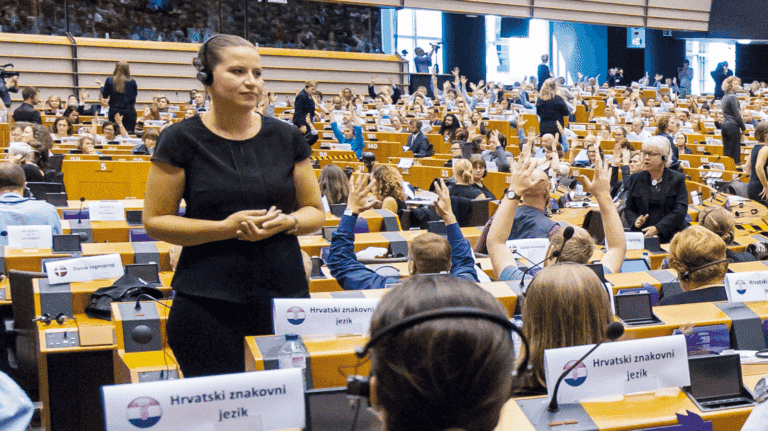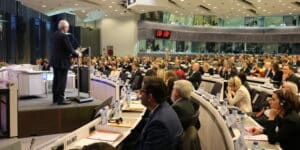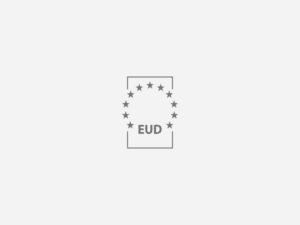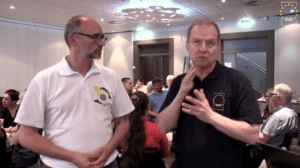The European Parliament, in consultation with the European Union of the Deaf (EUD) and the European Forum of Sign Language Interpreters (efsli), aim to establish a non-binding reference list of national sign language translators to translate tabled petitions submitted in national sign languages used in the EU. The list will be for information and reference only and the further possible recruitment will be organized by the European Parliament.
If appointed by the European Parliament, a National Sign Language Translator will translate petitions tabled in a EU national signed or written language to the corresponding national signed and written language on request.
In line with the ISO 17100:2015, to enrol to the list for translation assignments, qualified[2] deaf translators will be given a preference. If there is no qualified deaf translator available in an EU Member State, a qualified non-deaf translator/interpreter might be able to enter the list. S/he should then collaborate with a skilled deaf consultant (in line with ISO 17100:2015). As outlined in ISO 17100:2015, the National Sign Language Translator collaborates with another qualified deaf translator or an non-deaf translator/interpreter of her/his choice. This standard procedure ensures the high quality of the translation product.
To enroll into the reference list the National Sign Language Translator must meet the following requirements:
- Have at least 5 years of experience.
- Be deaf and a primary sign language user of one of the National Sign Languages in the EU (C1 and above)[3] and have reading competencies in a National Written Language (B2 and above/C1)[4] or be non-deaf translator/interpreter who has language competencies in both National Sign Language and National Written Language in an EU Member State (C1 and above)[5].
- Meet the formal qualifications as a translator/as an interpreter in one of EU countries
- has completed a formal translation/interpreting training program in one of EU Member States, or
- be officially accredited as a National Sign Language Translator/Interpreter in a national sign language in one of the EU Member States
- if there is no training program and official accreditation in one of the EU Member States available, recommendation letters (from the national Deaf Association or the from National Association of Sign Language Interpreters or from a qualified SL interpreter/translator with more than 10 years of working experience) need to be provided confirming that the applicant has more than five years working experience as a professional translator.
- Have perfect command of one EU language and a thorough command of at least 2 others, and a degree and/or certificationin any discipline.
To apply please send a letter outlining your competencies (language and translation) and qualifications and confirming that ISO 17100:2015 will adhered to its fullest extent by 17th September 2021 to EUD Executive Director, Mark Wheatley [email protected]. Applications which do not meet the criteria will be excluded.
[1] This call is to implement Petition No 1056/2016 tabled by Mr Mark Wheatley on behalf of European Union of the Deaf, requesting the European Parliament allow for the tabling of petitions in national sign languages used in the EU.
[2] EUD and efsli understand that different systems of accreditation/qualification/certificiation/training are in use across EU countries, for this reason each applicant’s qualification/accreditation/ceritification and training will be assessed individually.
[3] https://rm.coe.int/common-european-framework-of-reference-for-languages-learning-teaching/16809ea0d4
https://www.ecml.at/Portals/1/mtp4/pro-sign/documents/Common-Reference-Level-Descriptors-EN.pdf
[4] https://rm.coe.int/common-european-framework-of-reference-for-languages-learning-teaching/16809ea0d4
https://www.ecml.at/Portals/1/mtp4/pro-sign/documents/Common-Reference-Level-Descriptors-EN.pdf
[5] Ibid.












